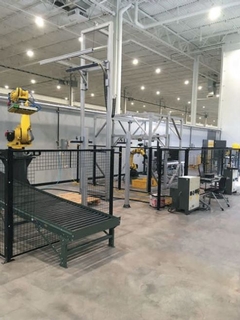
With our constant need for instant gratification, the way the world buys products is constantly changing. From downloading books directly to a Kindle or an iPad to Amazon testing drones to deliver goods within 20-minutes of ordering online in the UK, consumer expectations are evolving. We want what we want, and we want it now.
But how does this impact warehouses and manufacturing plants?
Currently, scientists have not been able to create more hours in the day – although who knows what the future holds. Remember the day when pausing live TV didn’t exist?
So, with not enough hours in the day and the continual dimensioning of the warehouse workforce, how do we as manufacturers compete in this do-or-die economy? The answer – robotic machinery or better known as warehouse automation technologies!
And, it’s not necessarily the high-tech machines that look like humans. When it comes to order fulfillment, material handling, distribution, and supply chain logistics, these technologies include intelligent conveyors, AGV’s, and AS/RS systems.
With the increased use of robots and similar applications, "machine guarding" (29, CFR 1901.212) remains one of the top 10 most frequently cited OSHA violations.
How do we create an effective safety system to protect those who encounter robotic systems?
Wire Mesh Guarding or Fencing is one solution, and the primary means of providing robotic safety. It firmly creates a set perimeter around the robot or automated equipment. The Robotic Industries Association (RIA) and US Occupational Safety and Health Administration (OSHA) guidelines establish the distance of 17½″-31½″ between the steel mesh to the robot eliminating the exposure of any dangerous movement by the machines. (OSHA 29 CFR 1910.217)
In areas where hazards are more extreme, interlocked barrier guards provide an excellent solution to keep personnel safe. These enclosures surround robotics or other automated equipment, and the doors come equipped with integrated safety interlocks.
On robot operations and associated machinery, these interlocks will automatically shut-off when a door is open. Additionally, combining a presence sensing device, such as a light curtain or pressure-sensitive mats, adds another level of safety and security.
Light curtains transmit infrared light beams in front of the machine or robot. When the light curtain engages during equipment operation, it sends a signal to the machine to stop.
Likewise, a pressure-sensitive mat placed at the entrance will send a signal to the machine to stop when activated by the weight of the operator’s footstep.
Another viable option is sensors that help robots identify humans and avoid them. For example, Amazon created a custom vest that warehouse workers wear, which come equipped with specialized sensors. These sensors allow the robots to recognize the worker, and then it recalculates its route to escape possible hazardous collisions.
In conclusion, if you consider adding robots or automated machinery in your warehouse or e-commerce fulfillment center, safety is a critical priority. And, with options like wire mesh guarding, light curtains, and pressure-sensitive devices, protection has never been more accessible!


